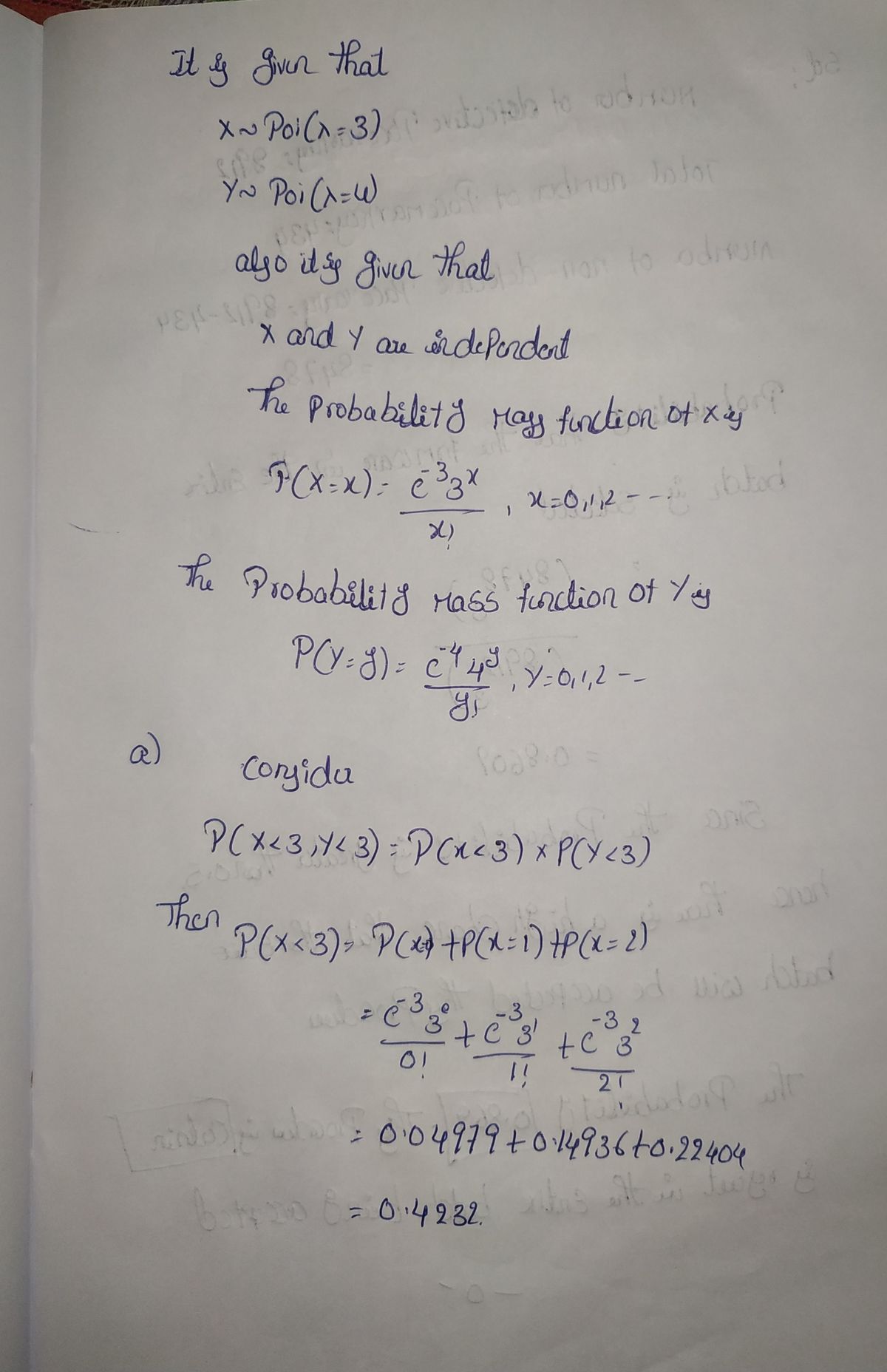
A First Course in Probability (10th Edition)
10th Edition
ISBN: 9780134753119
Author: Sheldon Ross
Publisher: PEARSON
expand_more
expand_more
format_list_bulleted
Question

Transcribed Image Text:**Problem Statement:**
Let \( X \) be a Poisson random variable with \( \lambda = 3 \) and \( Y \) be a Poisson random variable with \( \lambda = 4 \). Assume \( X \) and \( Y \) are independent.
Find the following probabilities:
(a) \( P(X < 3, Y < 3) \)
(b) \( P(X > 1, Y < 4) \)
Expert Solution
arrow_forward
Step 1

Step by stepSolved in 4 steps with 4 images

Knowledge Booster
Similar questions
- Let X and Y be independent discrete random variables and suppose that X+Y=2. Show that X and Y are constant random variables.arrow_forwardLet X₁, X₂ be 2 mutually independent discrete random variables. The first variable X₁ can be a whole number from 1 to 5. Its distribution function is 6 - i m₁ (i) 15 The second variable X₂ can be a whole number from 1 to 6. It has a uniform distribution. First, find the exact values (using fractions) of P(X₁ = 3) = 1/5 : P(X₂ = 5) = 1/6 P(X₁ = 3 and 3 and X₂ = 5) = 1/30 X₂ # Let Y denote the maximum of the X¿'s. Find the probability that Y = 1: P(Y = 1) = 1 Find the probability that Y = 2, P(Y= 2) = 2/45 Hint: Use cases based on what X₁ and X₂ are.arrow_forwardlet X(n,p) denotes binomial random variable with parameters n and p. Show that X(n+1,p) >st ( greater than equal ) X(n,p)arrow_forward
- Let X ~ N(1,2) and Y ~ N(4, 7) be independent random variables. Find the probability P(X + Y > 0):arrow_forwardSuppose X is a random variable such that E(X) = 90 and Var(X) = 7. Compute thefollowing: E(4X + 12) Var(−X) SD(4X)E(X^2) E(X + 3)^2arrow_forwardLet X(1), X(2), ..., X(n) be the order statistics of a set of n independent uniform (0, 1) random variables.Find the conditional distribution of X(n) given that X(1) = s(1), X(2) = s(2), ..., X(n-1)=s(n-1).arrow_forward
arrow_back_ios
arrow_forward_ios
Recommended textbooks for you
 A First Course in Probability (10th Edition)ProbabilityISBN:9780134753119Author:Sheldon RossPublisher:PEARSON
A First Course in Probability (10th Edition)ProbabilityISBN:9780134753119Author:Sheldon RossPublisher:PEARSON

A First Course in Probability (10th Edition)
Probability
ISBN:9780134753119
Author:Sheldon Ross
Publisher:PEARSON
